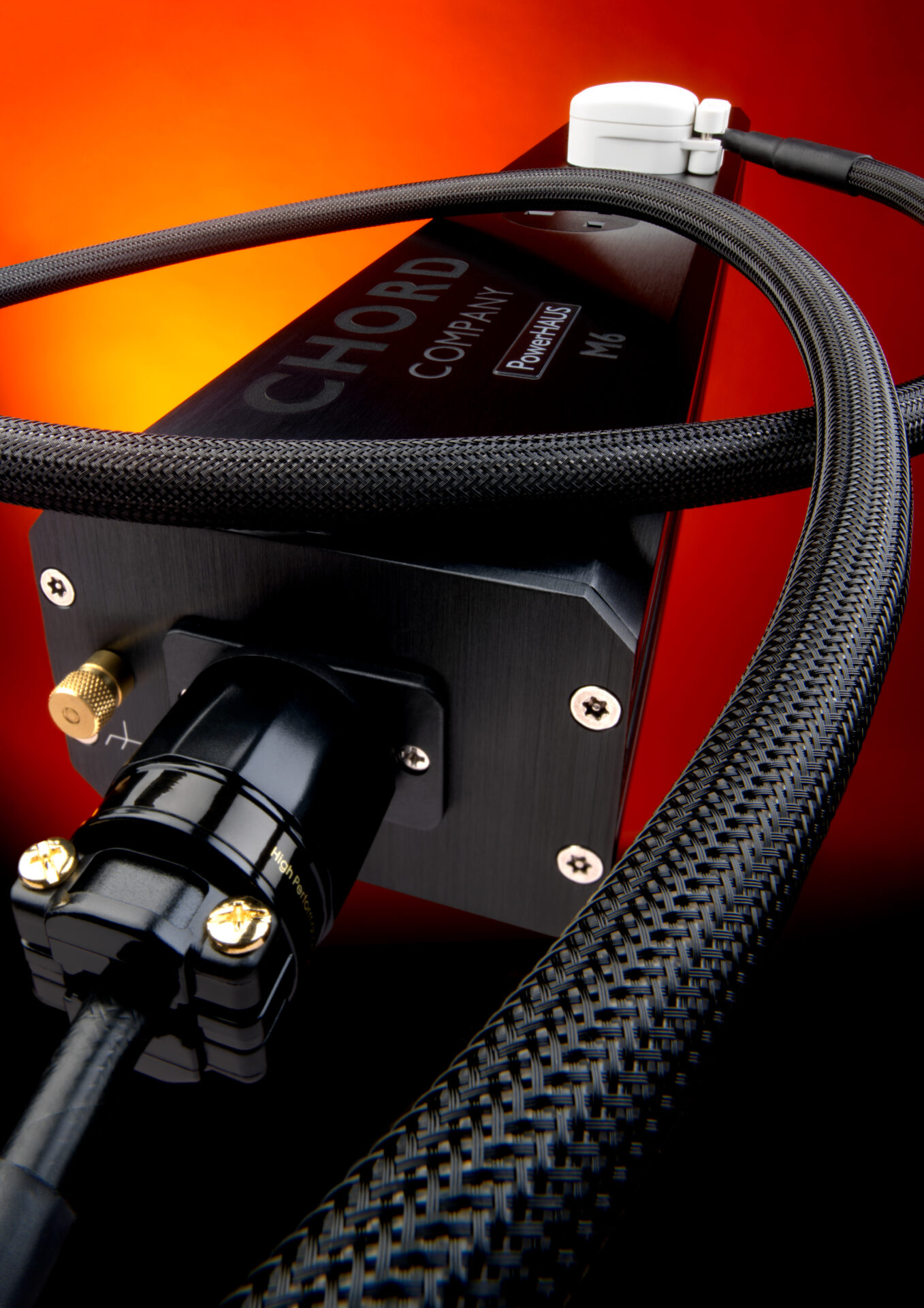The individual power lines (live, neutral and ground) are each treated to Chord’s proprietary SuperARAY technology, designed to reduce RFI/EMI and mechanical interference. The extra length of the M6, located between the input and output sockets, is to allow for the inclusion of power variant GroundARAY units also applied to each individual line. That’s pretty much the coup de grâce as far as mains-borne noise is concerned. Suddenly, the £1,000 difference in price between the S6 and the M6 starts to look rather more reasonable when you consider that each separate GroundARAY costs £550.
Reassuringly solid, refreshingly simple…
Using the PowerHAUS is simplicity itself – a nice change when it comes to audio products. Increasingly often, less is more is a maxim that seems to apply to practicality and ease of use. The PowerHAUS is big enough and heavy enough to look after itself, even when you are using multiple, springy or stiff power cords. It stays firmly planted where it’s put, resisting tipping or twisting imposed by the connected leads. Like all power blocks, it is susceptible to vibration transmitted via the supporting surface or through its own chassis. Sitting it on a set of HRS Nimbus or Neodio Origine B1 feet maximises the musical benefits while the inherent stability of the PowerHAUS makes it an unusually fuss-free exercise.
I’ve been using a number of different distribution blocks for years now, the two I’ve come to rely on being the Russ Andrews Power Block and the Nordost QB8: both have seen off a steady stream of alternatives, becoming genuine benchmark performers. Both are also star grounded, eight-way devices with 20A inputs. It means that functionally speaking, the PowerHAUS M6 is pretty much a straight replacement for either, although more expensive than both. The Power block runs close to £1,100, the QB8, £1,600, meaning that the two Chord models effectively bracket the competition, inviting direct comparison, as well as longer term listening.

After some careful consideration, I used a complex, single-source digital set up for the close comparisons. Front-end was the CH Precision D1.5 CD/SACD transport, paired with the new C1.2 DAC/Controller, both fed from a shared X1 power supply. The DAC’s output was hooked up to a pair of Konus Audio Integrale 2000 integrated amps, bi-amping the Living Voice R25A loudspeakers. It’s a variation on the system I recently found so entertaining – https://gy8.eu/review/bonkers/ – but the separation of transport and DAC provides both a step up in musical quality and the opportunity to play with plug order/grounding topology. I also ran complete Chord Epic and Nordost Frey cable sets, to see how the different distribution blocks worked with non-partner power cords…
Listening commenced with the current incumbents and it soon became apparent that, as nicely balanced and musically coherent as the Power Block certainly is, its smooth, slightly polite, mid-hall balance and perspective is readily eclipsed by the more immediate, dynamic and transparent sound of the QB8. The mish-mash of noise and samples that create the audio collage at the beginning of Aimee Mann’s ‘Real Bad News’ (Lost In Space, Mo-Fi MFSL UDSACD 2021) is far better separated by the Nordost unit, the individual elements cast against a cleaner, blacker background. When the vocal starts, it is more immediate, more lucid, more articulate and more intimately expressive. It makes for a more communicative and engaging listening experience.

